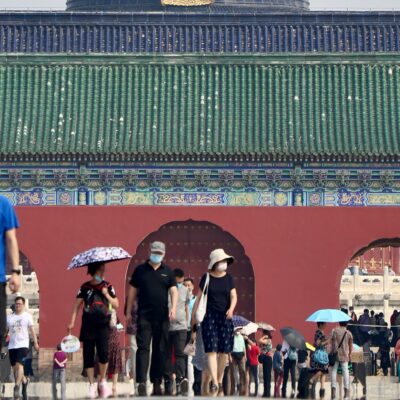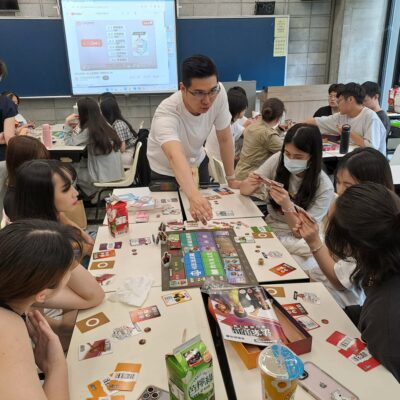Belonging
While belonging is irreducible to the concept of ‘home,’ both loom largely in studies of mobility and migrant experiences within changing global political environments. David Nolan, Karen Farquharson and Timothy Marjoribanks begin their 2018 edited collection on ‘Australian Media and the Politics of Belonging’ with a critical examination of the Qantas airways advertisement campaign ‘Feels like home.’ First launched in 2014, the ads famously feature ‘real’ people who are traveling back to Australia which is positioned as ‘home’ and as a place ‘where I belong’. The ‘home—where I belong’ depicted in the 2015 advertisement is middle-class, secular and White. This ‘home’ signifies the nation of Australia itself where ‘Non- white and Indigenous populations, scenes of urban and working-class life and the presence of non- ‘Anglo’ cultural traditions and rituals associated with Australian multiculturalism’ are visually absent. This absence signifies exclusion from the nation as home itself.
In May 2023, Qantas launched a reiteration of the series, ‘Feels like home, again.’ In this post- COVID-19 pandemic-closed borders version, a son travels to Melbourne from Tokyo for the first time in four years. The nostalgic invocation of the Australian Outback and the staging of this ‘real-life reunion’ between an ‘Aussie mum’ and overseas based son signals a return to normalcy where it is safe to travel following years of border closures.
Belonging is situated temporally, spatially and intersectionally. And, the context of global im/mobilities brought on by a pandemic causes us to pause and re-examine the common understanding of belonging as anchored in an ‘emotional (or even ontological) attachment about ‘feeling at home’.’ We only have to reflect on how, as the pandemic began to unfold, then Australian Prime Minister Scott Morrison instructed many international students (most of whom are from Asian nations) and temporary visitors it was ‘time to make their way home.’ This instruction to ‘go home’ mimics racist tropes of ‘go back to your own country’ and signals to the recipients that they do not belong in their place of current residence.
Sinophobic discourses and anti-Asian racism spiralled in new and very visible ways during the global pandemic. Asian women in Australia in particular noted higher instances of harassment, and Asian youth with higher levels of engagement with COVID-19 related content on social media in Australia were exposed to greater levels of anti-Asian sentiment. Sinophobic discourses which resurged in the face of the pandemic, have a long history in settler-colonial Australia. And, as Gilbert Caluya’s examination of the invocation of the nation as ‘homely’ by Australian Senator Pauline Hanson in the 1990s shows, the conflation of ‘nation’ and ‘home,’ facilitates racist discourses which re-centre and re-privilege White national belonging. As Caluya notes, this critical reading of the intimate publics of home does not negate how migrants have found belonging and created homes.
The plasticity of the very notion of ‘home,’ operates on scales from the individual home, to the neighbourhood, to the community, to the nation. A study by Greg Nobel of migrants’ experiences of anti-Muslim and anti-Arab racism in post 2001Australia highlights just this. For many of those interviewed, ‘home’ offers a respite from the banal racism of the everyday. The personal artefacts within the home contribute to this notion of the individual ‘home’ as a place of ‘comfort.’ Noble turns to Anthony Gidden’s idea of ‘ontological security’ arguing that the home is central to this sense of security through which we maintain our sense of self—our sense of ‘identity, relationship and belonging.’
The policing and maintenance of the porous boundaries of belonging is not only contingent on social categories but also ‘produced along the convergent and divergent lines of nationality, ethnicity, ‘race,’ gender, class, religion, age and sexuality’. Within these power structures, individuals may adopt a stance of pragmatic belonging to claim the ‘right’ to belong. Rimi Khan notes that the strong feelings of national belonging expressed by youth in the Multicultural Youth Australia census can be understood when contextualised in their discussions in interviews. The youth demonstrated an understanding of how their words may be instrumentalised. This led to them creating a distance from ‘the othering effects of racist exclusion’ through claiming a sense of belonging.
Safety
The directives to ‘stay at home’ during periods of COVID-19 lockdown were sometimes complemented with an explanatory phrase to ‘stay safe.’ For many, the meanings of home altered radically during lockdown periods of the COVID-19 pandemic where the parameters of one’s residence also functioned as the workplace, the school, the café. Many were also required to leave the home to carry out what was deemed essential work. Home as a place of safety took on a myriad of connotations. The home, however, is not a place of safety for all people all of the time. Increased awareness of this resulted in public messaging to indicate that it was okay to leave home if home was unsafe for reasons such as family violence.
Feelings of isolation may occur within the spaces that are referred to as home. One study seeking to understand youth experiences of loneliness asked young people of Black, Asian and other minority backgrounds from London to represent their notions of home. While feelings of loneliness were associated by young people with the home in both pre-COVID and during-COVID study, the authors note that the home was conceptualised more negatively in the during-COVID-19 study.
Feelings of belonging are often framed through the image of home. Home is where one belongs. It is also supposed to be where one feels safe and secure. Like belonging, safety is a subjective and emotional relationship with people, space, objects, and the environment more generally. To understand ‘safety’ as something which is not objectively determined but subjectively felt is to understand ‘safety’ as spatially and temporally contextual. Although one person may feel safe in a particular location, space or place, another individual may experience that very same location, space or place as decidedly unsafe.
Further exploring ‘safety’ and ‘belonging’
The articles in this edition of Melbourne Asia Review, explore questions of mobility, belonging and safety and the intersections of gender, sexuality or sexual orientation in and around Asia. The articles highlight the importance of community-based and co-creative approaches when exploring how individuals negotiate multiple axes of discrimination. The difficulties and importance of creating and maintaining safe spaces for international students within tertiary institutions in Australia (Dongmei Li, Nurul Mohamad Roslan, Sally Pei Han Chang and Zhu Tao) and student-led support networks for refugees in Tokyo, Japan (Christina Fukuoka and David Slater) underpin the importance of elevating a diversity of voices and experiences. As contemporary configurations of power uphold and maintain sexual racism (Gilbert Caluya) and racialised and gendered structural inequality (Monika Winarnita and Carmela Leone), both physical (Fukuoka and Slater; Li et al) and/or digital realms (Earvin Charles Cabalquinto), spaces can be utilised to facilitate a sense of connection for those at a distance (Renu Singh) and offer important ‘life support’ (Winarita and Leone) in times of crisis. This distance can enable a ‘zone of suspension’ in which mobility can enable the creation of ‘queer lives and identities’ (Fran Martin). How mobility is navigated is heavily impacted by institutional and legal frameworks. C.L. Quinan and Adam Chen-Dedman demonstrate there is an intermingling of progress and prejudice within the Asia region in regard to recognition of trans and gender diverse identities. This intermingling can also be noted in Sujith Kumar Prankumar, Horas TH Wong and Limin Mao’s analysis on HIV outcomes for Asian born gay men in contemporary Australia which advocates for a series of interventions that combined legal health and social care to create targeted health education.
The articles in this edition demonstrate how some groups are positioned at the ‘intersection’ of multiple axes of oppression. They also demonstrate how virtual and physical spaces are creatively navigated to provide pockets of support in otherwise isolating and/or discriminatory environments. They each offer potential new frameworks to explore how gender impacts on mobility and feelings of belonging and safety in and around Asia.
Image credit: Özge Taşkıran/Pexels.




